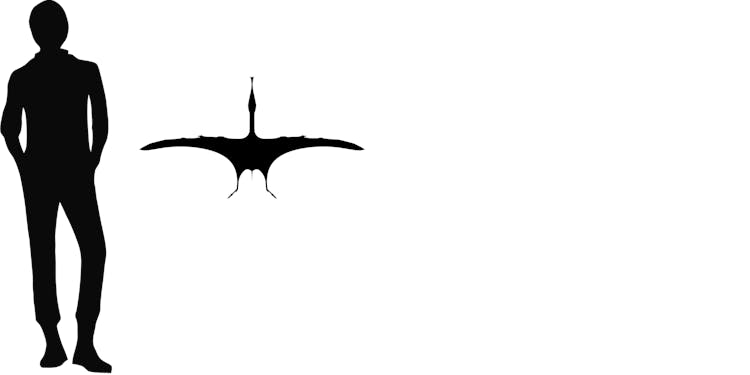


Wenupteryx uzi is a small, probable archaeopterodactyloid pterosaur known from the Upper Jurassic Vaca Muerta Formation in Neuquén Province, Argentina. It’s based on an incomplete, but associated skeleton, as well as an isolated ulna; and was named and described in 2013 by Laura Codorniú and Zulma Gasparini. The name uses the Mapuche words “wenu” meaning “sky” and “uzi” meaning “fast.”
The associated skeleton includes some cervical and dorsal vertebrae, both shoulders, portions of the right wing and most of the left wing, portions of the hips and most of the hindlimbs. The cervical vertebrae in Wenupteryx are unusual, with a depression on the front side of the centrum, but also with a small bump on the lower edge of the centrum. The limb bones, including a lengthened metacarpus, show that Wenupteryx was a pterodactyloid, the group of short-tailed pterosaurs that emerged in the Jurassic and dominated the skies of the Cretaceous. Features of the cervical vertebrae suggest links to the archaeopterodactyloids, like Pterodactylus and Ctenochasma.
No skull material is known for Wenupteryx, but most other archaeopterodactyloids have long snouts usually with fan-shaped soft-tissue crests somewhere on the upper surface of the crown of the head or the rostrum, so it’s likely Wenupteryx did too. Many basal archaeopterodactyloids, like Pterodactylus and Germanodactylus have many small, sharp teeth for going after fish or small terrestrial prey; but others like Ctenochasma and Gnathosaurus have very long teeth used for suspension feeding. Of course, without any skull or tooth material it’s unknown which feeding strategy was used by Wenupteryx.
The Vaca Muerta Formation was deposited approximately 150 million years ago, in a shallow sea and tropical lagoon environment linked to the Pacific Ocean to the west. Regardless of its teeth, Wenupteryx probably lived and fed near the shore of the ancient sea.
